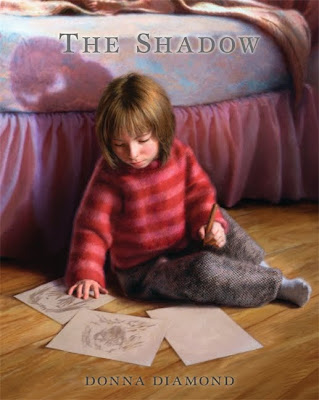 Ship Breaker
Ship Breaker, by
Paolo Bacigalupi (Little Brown, 2010, YA, 323 pages). In a future earth, the oceans have risen, cities have drowned, and fossil fuels are becoming obsolete. But some things are much the same as they are today--there are workers compelled by poverty and desperate circumstances to labor in hideously unsafe conditions, breaking up derelict hulks on the beaches. It is on such a beach, inside such a hulk, that we meet the central character--a boy named Nailor--and the crew of kids who work with him.
The ship breakers live desperate lives, but they are not without hope--everyone dreams of making a "lucky strike," and finding salvage worth enough to raise them a few rungs, at least, in the vicious pecking order of the beaches. When Nailor and his crewmate Pima find a clipper ship (a vessel that uses marvelous technology to harness the winds and fly infinitely faster than ships of today), they think their day has come. It is filled with riches. But on board they find Nita, the wealthy girl whose vessel it was, and she is still alive. She promises them that she is worth more living then dead, but there are many things she isn't saying. Like why her ship was wrecked on this bit of reef...and just who is it that its going to come looking for her. And when Pima and Nailor's lucky strike is discovered by the other salvors of the beach, including Nailor's father, the most dangerous of them all, what seemed like a gift from the gods turns ugly fast.
Nailor decides to throw his lot in with the wealthy girl. In a desperate effort to get he to safety, they jump a freight train headed toward drowned New Orleans. There they might find her friends...or they might not. Accompanying them is Tool, a half man/half dog -- one of many such beings, genetically altered to serve the rich. But Tool is nobody's servant...
And I'll stop with the summary now, and just say, for those who might think this sounds rather unbearably dark, that it becomes a fast-paced adventure and the ending is not without hope.

Which is a good thing, because for the first 80 pages or so, I wasn't sure I could finish this one, because the beginning is so very dark and gritty and sad, focusing, as it does, on the human suffering entailed in ship breaking. Which is not something futuristic and dystopian, that we, sitting comfortably with a good book, don't have to worry about. It goes on today--here's
a current report on ship breaking in Bangladesh that describes almost exactly the ship breaking in this fictional "dystopia." As in today's world, those who do not have to worry about starving to death are comfortably insulated from what happens to those who live in dire poverty. And so this book wasn't reading as "fantasy" or "science fiction" for me (despite the half-men and the clipper ships). It was reading as gritty, heart-breaking realism (and I am disappointed that the author chose not to make clear that the pretty darn awful life he wrote for his characters is being lived by people in our own world; he does, however, include information about real-life ship breaking at
the book's website).
However. Once the story, and the characters, get going, the book became much more readable (for wimpy me). For the most part, it's fairly standard kids in danger stuff; well-written and engaging, but not extraordinary. That being said, the plot of poor boy and rich girl forced to work together and critically consider their assumptions about each other and their world is deftly handled. The moral implications of choices made by characters are considered, which adds considerable depth to the story. But the main reason I kept reading was Tool--an utterly fascinating character who is the most science-fictiony part of the book, what with being a product of genetic manipulation. There is clearly more of his story to tell--I hope it plays a large part in the sequel, coming out sometime next year.
Question: when an author presents in a work of speculative fiction a specific, horrible thing that is present in our own world, but which isn't necessarily very well known, does he have any obligation to tell his readers about the real world part of things? Does it make the book stronger for you when he or she does, or do you find it not particularly relevant to the reading experience of the fictional work?
Edited to add: I'd forgotten to add this to my list of multicultural/multiethnic fantasy. Nailor is a mix (his hair and skin are dark, his eyes are blue), other central characters were more clearly identified as black and brown, and Nita's family names are Phatal and Chaudhury (although, since it's the future, these names might not be as clearly indicative of anything as they would be today). (thanks to Liz at
a Chair, a Fireplace, and a Tea Cozy, for the details she provides--I myself returned my copy to the library without checking to see what the author actually said).
A sample of other reviews (of which there have been many):
Presenting Lenore,
Fluidity of Time,
Book Ends,
Kids Lit,
Fantasy Book Critic, and
io9. Lenore also has
an interview and a giveaway!

(Anyone reading this who might want to do their gift giving in a way that can help real-world kids forced to live in dangerous misery might consider buying from
Hiefer International or from
SERRV--fair trade, hand-made, non-profit. This ornament is one of many affordable gifts you can buy to support the women of Bangladesh).
































